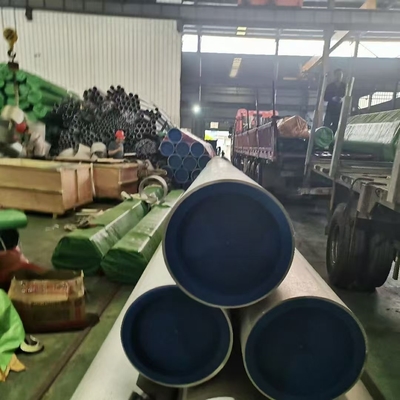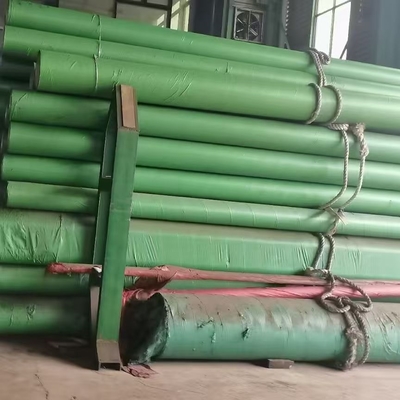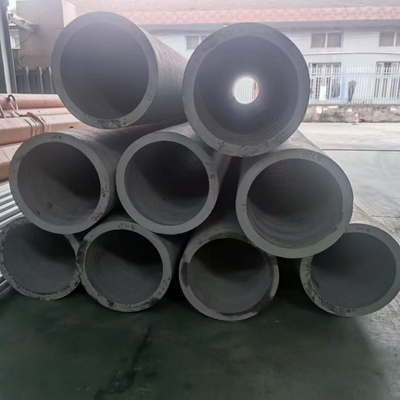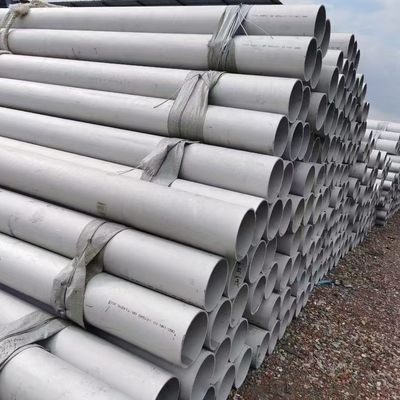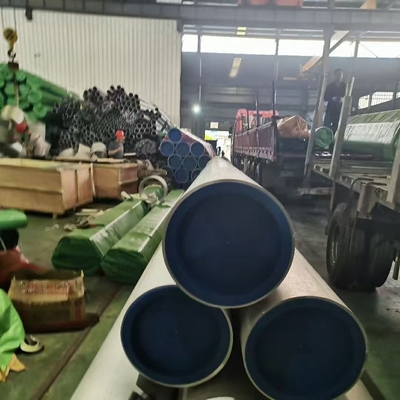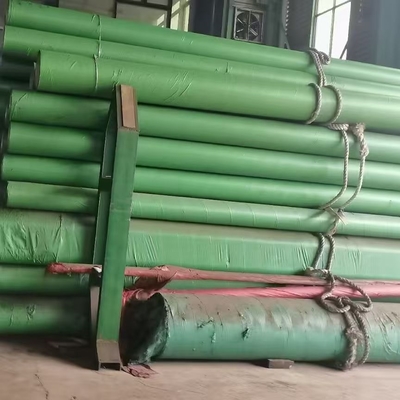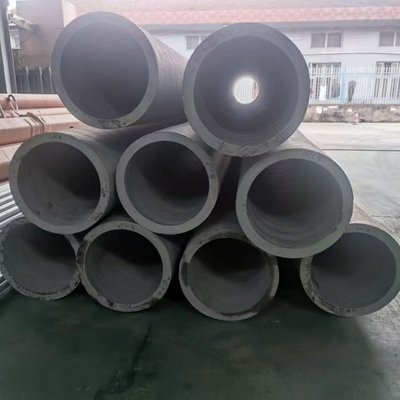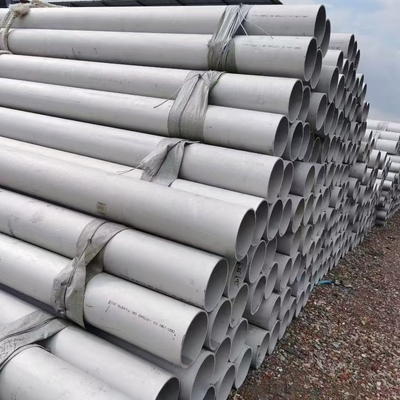Alle Produkte
-
 Raian IonescuMaterielle Qualität sehr gut. wir haben, zusammenzuarbeiten mehr als 10 Jahre. Sie handeln Losarten des Stahlmaterials. Alle materielle Qualitätsware. Sie Aufgabe für alle materielle Qualität. Wir planieren fortzufahren, mit ihnen in der Zukunft zusammenzuarbeiten
Raian IonescuMaterielle Qualität sehr gut. wir haben, zusammenzuarbeiten mehr als 10 Jahre. Sie handeln Losarten des Stahlmaterials. Alle materielle Qualitätsware. Sie Aufgabe für alle materielle Qualität. Wir planieren fortzufahren, mit ihnen in der Zukunft zusammenzuarbeiten
Superaustenitischer Edelstahlrohr, Legierung 926 / EN 1.4529, nahtlose Rohre, ERW-geschweißte Rohre
| Herkunftsort | China |
|---|---|
| Markenname | DELTA |
| Zertifizierung | ISO |
| Modellnummer | 926 / 1.4529 |
| Min Bestellmenge | 1000 kg |
| Preis | 20 - 30 USD/Kg |
| Verpackung Informationen | Standardverpackung für den Exportieren |
| Lieferzeit | 5 - 12 Tage basierend auf der Menge |
| Zahlungsbedingungen | L/C, T/T, Western Union |
| Versorgungsmaterial-Fähigkeit | 4 Tonnen pro Woche |

Treten Sie mit mir für freie Proben und Kupons in Verbindung.
Whatsapp:0086 18588475571
Wechat: 0086 18588475571
Skype: sales10@aixton.com
Wenn Sie irgendein Interesse haben, leisten wir 24-stündige Online-Hilfe.
xProduktdetails
| Produkte | Nahtloses rostfreies Stahl | Grad | 926 / 1.4529 |
|---|---|---|---|
| Durchmesser | DN10 - DN400 | Länge | 6 m oder kundenspezifisches Schneiden als Anfrage |
| Standard | ASTM EN | Service | Schneiden |
| Ladeanschluss | Shanghai Hafen | Dicke | 4.0 - 50,0 mm |
| Hervorheben | Super Austenitedelstahl-Rohr,Legierung 926,nahtlose Rohre |
||
Produkt-Beschreibung
Superaustenitischer Edelstahlrohr-Legierung 926 / EN 1.4529 Nahtloses Rohr ERW-geschweißte Rohre
Produktspezifikation
| Produktname | Nahtloses Edelstahlrohr |
Güte: |
304 304L 304LN 304H 309S 310S 314 315 316L 316Ti 317L 321 329 347H 410 2205 2507 2550 S32760 904L 254SMO 926 C276 400 600 625 und gleichwertige Güte in GB JIS EN DIN Standard |
| Normen: | ASTM A213M-94b ASTM A249M-94a ASTM A269-94a ASTM A312M-94b,ect. ASTM A790 |
| DIN 17456-85 DIN 17458-85 DIN 17459-92.ect | |
| JIS G3446-1994 JIS G3448-1997 JIS G3459-1997 JIS G3463-1994,ect. | |
| GB13296-1991 GB14975-2002 GB14976-2002,ect. | |
| Größe: | ND5 - DN400 |
| Länge: | 6m Länge oder Zuschnitt in beliebiger Länge nach Bedarf |
| Anwendungen: | Flüssigkeits- und Gastransport, Struktur, Kessel, Wärmetauscher, Überhitzer |
Legierung 926 (auch als EN 1.4529 bezeichnet) ist eine hochwertige superaustenitische Edelstahllegierung, die entwickelt wurde, um eine außergewöhnliche Korrosionsbeständigkeit, mechanische Festigkeit und thermische Stabilität zu gewährleisten – was sie zu einer bevorzugten Wahl für anspruchsvolle industrielle Rohrleitungssysteme macht. Sie wird üblicherweise als nahtlose Rohre (für Hochdruckanwendungen) und ERW-Rohre (Electric Resistance Welded, elektrisch widerstandsgeschweißt) (für kostengünstige, mitteldruckanwendungen) hergestellt und deckt vielfältige betriebliche Anforderungen in verschiedenen Sektoren ab. Im Folgenden finden Sie einen detaillierten Überblick über die wichtigsten Parameter, die Leistung, die Normen, ähnliche Güten und die Anwendungen.
1. Chemische Zusammensetzung (Schlüsselparameter)
Die überlegene Leistung von Alloy 926 / EN 1.4529 beruht auf ihrer präzise ausgewogenen chemischen Zusammensetzung, die für Korrosionsbeständigkeit (insbesondere gegen chloridinduzierte Spannungsrisskorrosion, Cl-SCC) und mechanische Integrität optimiert ist. Die typische Zusammensetzung (gemäß EN 10088-1 und ASTM A789) ist wie folgt:
| Element | Gehaltsbereich (%) | Funktion |
|---|---|---|
| Kohlenstoff (C) | ≤ 0,02 | Minimiert die Karbidausscheidung (vermeidet interkristalline Korrosion) |
| Chrom (Cr) | 20,0 – 22,0 | Erhöht die allgemeine Korrosionsbeständigkeit (bildet eine passive Oxidschicht) |
| Nickel (Ni) | 24,0 – 26,0 | Stabilisiert die austenitische Struktur; verbessert die Duktilität und die Cl-SCC-Beständigkeit |
| Molybdän (Mo) | 6,0 – 7,0 | Erhöht die Beständigkeit gegen Lochfraß, Spaltkorrosion und reduzierende Säuren |
| Stickstoff (N) | 0,15 – 0,25 | Festigt die Legierung (ohne die Duktilität zu beeinträchtigen) und erhöht die Lochfraßbeständigkeit |
| Eisen (Fe) | Rest | Basismetall für strukturelle Stabilität |
| Mangan (Mn) | ≤ 2,0 | Fördert die Austenitbildung; kontrolliert die durch Schwefel verursachte Sprödigkeit |
| Silizium (Si) | ≤ 0,7 | Verbessert die Gieß-/Schweißleistung; wirkt als Desoxidationsmittel |
| Phosphor (P) | ≤ 0,03 | Minimiert, um Sprödigkeit und Korrosionsanfälligkeit zu vermeiden |
| Schwefel (S) | ≤ 0,01 | Streng begrenzt, um Heißrisse beim Schweißen zu verhindern |
2. Mechanische Eigenschaften
Legierung 926 / EN 1.4529 weist sowohl bei Raumtemperatur als auch bei erhöhten Temperaturen eine ausgezeichnete mechanische Festigkeit sowie eine hohe Duktilität auf – entscheidend für Rohrleitungssysteme, die Druck, Vibrationen oder thermischen Zyklen ausgesetzt sind. Typische Eigenschaften (für nahtlose Rohre, geglühter Zustand) sind:
| Eigenschaft | Wert (geglüht) | Prüfnorm |
|---|---|---|
| Zugfestigkeit (σb) | ≥ 650 MPa | EN ISO 6892-1 / ASTM E8 |
| Streckgrenze (σ0,2) | ≥ 310 MPa | EN ISO 6892-1 / ASTM E8 |
| Dehnung bei Bruch (δ) | ≥ 35 % (in 50 mm Messlänge) | EN ISO 6892-1 / ASTM E8 |
| Härte (Brinell, HBW) | ≤ 250 | EN ISO 6506-1 / ASTM E10 |
| Kerbschlagzähigkeit (Charpy V-Kerb) | ≥ 100 J bei -196°C | EN ISO 148-1 / ASTM A370 |
Hauptvorteil: Behält >80 % seiner Festigkeit bei Raumtemperatur bei 400°C (752°F) bei und eignet sich somit für Hochtemperatur-Prozessrohrleitungen.
3. Korrosionsbeständigkeit
Als superaustenitische Legierung übertrifft Alloy 926 / EN 1.4529 herkömmliche austenitische Stähle (z. B. 316L) in aggressiven Umgebungen, insbesondere in solchen, die Chloride, Säuren oder Salze enthalten. Ihre Korrosionsbeständigkeit wird durch zwei kritische Kennzahlen quantifiziert:
- Lochfraßbeständigkeitsäquivalentzahl (PREN): ~45 (berechnet als PREN = %Cr + 3,3×%Mo + 16×%N). Ein PREN >40 weist auf eine ausgezeichnete Beständigkeit gegen Lochfraß/Spaltkorrosion (z. B. in Meerwasser oder Salzlösungen) hin.
- Kritische Lochfraßtemperatur (CPT): ≥ 40°C (104°F) in 6 % FeCl₃-Lösung (gemäß ASTM G48 Methode A), viel höher als die CPT von 316L (~10°C).
Beständig gegen:
- Chloridinduzierte Spannungsrisskorrosion (Cl-SCC) in Meerwasser, Salzlösungen oder chemischen Prozessströmen.
- Allgemeine Korrosion in verdünnten Säuren (z. B. Schwefelsäure, Phosphorsäure) und alkalischen Lösungen.
- Spaltkorrosion in stagnierenden oder schwach fließenden Bereichen (z. B. Rohrfittings, Flansche).
Einschränkungen: Nicht empfohlen für konzentrierte Salpetersäure (>65 %) oder hochkonzentrierte Flusssäure (HF), wo spezialisiertere Legierungen (z. B. Hastelloy C276) erforderlich sind.
4. Herstellungsformen & Normen
Rohre aus Alloy 926 / EN 1.4529 werden in zwei Hauptformen hergestellt, um den unterschiedlichen Anwendungsanforderungen gerecht zu werden, wobei die Einhaltung globaler Normen die Qualität und Austauschbarkeit gewährleistet:
Rohrtypen
- Nahtlose Rohre: Hergestellt durch Extrusion oder Durchstoßen (keine Schweißnähte), bieten eine hervorragende Druckintegrität für Hochdruck-/Hochtemperaturanwendungen (z. B. Öl- und Gasbohrköpfe, chemische Reaktoren).
- ERW-geschweißte Rohre: Geformt durch Walzen von Metallbändern und Schweißen der Naht durch elektrischen Widerstand (ohne Zusatzmetall), ideal für Mitteldrucksysteme (z. B. Wasseraufbereitung, Marine-Rohrleitungen), bei denen Kosteneffizienz Priorität hat.
Wichtige Normen
| Normenorganisation | Normnummer | Geltungsbereich |
|---|---|---|
| Europäisch (EN) | EN 10216-5 | Nahtlose Edelstahlrohre für Druckzwecke |
| EN | EN 10217-7 | Geschweißte Edelstahlrohre für Druckzwecke |
| Amerikanisch (ASTM) | ASTM A789 | Nahtlose und geschweißte Edelstahlrohre für allgemeine Zwecke |
| ASTM | ASTM A928 | Nahtlose und geschweißte superaustenitische Edelstahlrohre |
| International (ISO) | ISO 1127 | Edelstahlrohre (allgemeine Spezifikationen) |
5. Ähnliche Güten (Alternative Legierungen)
Legierung 926 / EN 1.4529 gehört zu einer Familie superaustenitischer Edelstähle mit vergleichbaren Eigenschaften. Diese Güten sind in nicht spezialisierten Anwendungen oft austauschbar, obwohl geringfügige Unterschiede in der Zusammensetzung die Leistung in extremen Umgebungen beeinträchtigen können:
| Gütenbezeichnung | Norm | Hauptunterschied zu Alloy 926 / EN 1.4529 |
|---|---|---|
| Legierung 254 SMO® | EN 1.4547 / ASTM A789 | Niedrigeres Ni (17-19 %), höheres Mo (6,5-7,5 %); ähnliches PREN (~43) |
| AL-6XN® | ASTM B637 | Höheres N (0,20-0,30 %), etwas niedrigeres Mo (5,0-6,0 %); höhere Zugfestigkeit |
| 20Mo-6 | ASTM A789 | Identische Zusammensetzung wie Alloy 926 (oft als "Markenname"-Variante betrachtet) |
| Legierung 825 | EN 1.4876 / ASTM B163 | Höheres Ni (38-46 %) und Cu (1,5-3,0 %); bessere Beständigkeit gegen Schwefelsäure (aber niedrigeres PREN ~32) |
6. Typische Anwendungen
Rohre aus Alloy 926 / EN 1.4529 werden häufig in Industrien eingesetzt, in denen Korrosionsbeständigkeit, Drucktoleranz und Haltbarkeit unverzichtbar sind. Zu den wichtigsten Anwendungsbereichen gehören:
- Öl & Gas: Offshore-Meerwassereinspeisungsleitungen, Unterwasserpipelines und Sauergas (H₂S-haltige) Transportsysteme (beständig gegen Cl-SCC und Sulfidspannungsrisse).
- Chemische Verarbeitung: Rohrleitungen für Schwefelsäure (verdünnt), Phosphorsäure und Amin-Scrubbing-Systeme (vermeidet Korrosion durch aggressive Prozesschemikalien).
- Schiffstechnik: Meerwasserkühlsysteme, Bordrohrleitungen und Küsteninfrastruktur (hält Salzwassereinwirkung ohne Lochfraß stand).
- Wasseraufbereitung: Entsalzungsanlagen (Umkehrosmose-Zuleitungen) und Abwasserbehandlungsrohre (beständig gegen chloriertes Wasser).
- Stromerzeugung: Rauchgasentschwefelungsanlagen (FGD) in Kohlekraftwerken (handhabt saure Wäscherlösungen).
- Pharma- und Lebensmittelverarbeitung: Sanitärrohrleitungen für hochreine Prozesse (geringer Kohlenstoffgehalt verhindert Kontamination; leicht zu reinigen).
7. Hinweise zum Schweißen & zur Herstellung
Um die Korrosionsbeständigkeit der Legierung nach der Herstellung aufrechtzuerhalten, erfordert das Schweißen von Rohren aus Alloy 926 / EN 1.4529 eine sorgfältige Kontrolle:
- Zusatzwerkstoff: Verwenden Sie passende superaustenitische Zusatzwerkstoffe (z. B. ERNiCrMo-3 oder ERNiCrMo-10), um eine Verdünnung der Zusammensetzung zu vermeiden.
- Wärmeeintrag: Begrenzen Sie den Wärmeeintrag auf<1,5 kJ/mm, um eine Grobkornbildung zu verhindern (was die Kerbschlagzähigkeit verringert).
- Nachbehandlung: Es ist keine obligatorische Wärmebehandlung nach dem Schweißen (PWHT) erforderlich, aber das Beizen (mit Salpeter-Flusssäure) wird empfohlen, um Schweißzunder zu entfernen und die passive Oxidschicht wiederherzustellen.
![]()
![]()
![]()
![]()
Empfohlene Produkte



